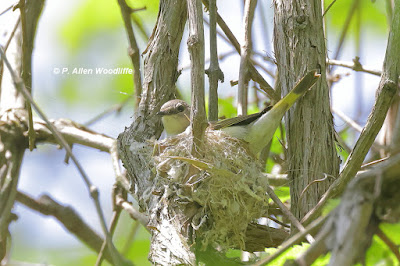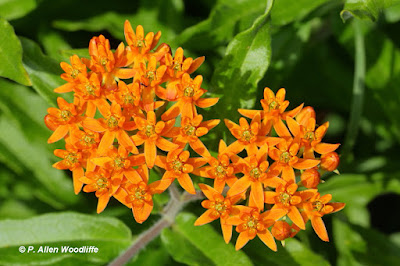Most readers will be aware of the first two books I have produced. The first one came out in early 2023, and was entitled Life on a Sandspit. It features lots of photos and some habitat description of Rondeau.
Earlier this year, the second book was completed, and is entitled Natural Treasures of Chatham-Kent. It features a broader array of natural habitats that formerly occurred in C-K and where some remain, as well as listing where such habitats are publicly accessible.
Both books are available at the following places:
Friends of Rondeau bookstore, Rondeau Park
Bayview Market, just outside of Rondeau Park
Book Brothers, King St E, Chatham
Lavender and Honey, King St. E, Chatham
Mindful Market & Eco Hub, Blenheim
Mitton's Jeweler's, Ridgetown
The Gift Cabin, Erieau (update: The Gift Cabin is closing, so the books are not available here)
The Five-Eau, Erieau
I do envision making them more available across Chatham-Kent, but marketing is not my strong point, and I have been, of course, more involved with other priorities in the last few months.
The third book which has been initiated and is in a first draft, will focus on the Prothonotary Warbler. It is probably the most iconic and popular bird species in the Carolinian Life Zone and most certainly at Rondeau, where it was first discovered nesting in Canada back in 1929. It has been discovered nesting elsewhere in Canada, mainly along the north shore of Lake Erie, but Rondeau has generally been considered the primary stronghold for this species ever since.
I have been following this species at Rondeau at various intensities, for 51 years, and have been able to get some wonderful photos. This current year, I spent far less time due to Marie's ill health and eventual passing, which of course changed my priorities considerably. On the rare occasion that I was out this spring, I only managed to photograph the female, shown next.I do hope to get back to completing this book over the next few months as time and my energy dictates. It will be a much smaller and shorter book compared to the first two, but there is lots to show and tell about the Prothonotary and its relevance to Rondeau.
I did manage to see a few other birds during my occasional outings, along with a few photos, including the following, such as this female American Redstart building a nest.....
and this Great Crested Flycatcher, perched high above the slough where I was watching and waiting for a Prothonotary to show.
My previous post mentioned that I had been to places other than Rondeau during the month or so after Marie passed away, where I could get some quiet time, focus on nature and refresh my soul. Some of these places included St. Clair NWA as well as the lakeshore nature trails both north and south of Mitchell's Bay. All of these places are along Lake St. Clair, and with their spacious and wide open nature, gave lots of photo opportunities and the usually gentle breezes helped to keep mosquitoes and deer flies in reduced numbers.
American Goldfinches were plentiful, picking away at the mature seed/fluff of Canada Thistle for some nest building material.
Black Terns used to be quite abundant near large wetland areas, not only feeding but also nesting. In recent years, however, they have been on the decline. They are always nice to see, but due to their rather erratic flight, can be a challenge to photograph!
The Common Snapping Turtle is not all that common, and is on the Species At Risk list. This large female was on the trail looking for a spot to lay her eggs.
Common Yellowthroats are fairly common, and this male was carrying some food item to the nestlings at its well-hidden nest.
Great Egrets nest at some of the offshore islands, but are frequently seen nearby foraging at the coastal wetlands for food. They seem to be more tolerant of hikers once they depart from the shallow marsh and perch up in a tree.
This next one was actually well away from the coastal wetlands, since with all the recent rain there were many flooded fields.
A much smaller heron type, is a Green Heron. As with the egret, it seems to be more tolerant of hikers once it can get safely up in a tree....
...but even then, they have their limit of tolerance.
Northern Leopard Frogs are abundant....
...as are Red-winged Blackbirds. There are many hundreds of them along the coastal wetlands, as well as elsewhere.
Sandhill Cranes are becoming more and more regular and in greater numbers. Before the crops get too far along, they can be seen foraging in fields adjacent to the NWA.....
....or in flight between the fields and the wetlands. A small number of them may be nesting in some secluded area of the marshes.
Tree Swallows are frequently seen foraging for insects over the wetlands. Hopefully they are finding lots of mosquitoes!
In the earlier part of the season, Wild Turkeys will be more often encountered, as the young of the year are prowling around becoming familiar with their local landscape. In the case of this one, it was with a couple of others at the edge of the field along a wide shrubby creek adjacent to the NWA. As the season progresses, there will be fewer and fewer, most likely due to the predatory habits of Eastern Coyotes. Only the strong and wary turkeys will survive.
If you would like to subscribe, or unsubscribe, to Nature Nuggets, send an email to: prairietramer@gmail.com














































